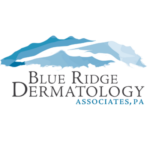Your skin accompanies you through every walk of life and helps with heat regulation and protecting your body from harmful environmental factors. With these primary functions, it is sure to get scraped, scuffed, and bruised along the way. Sometimes, we may even form benign or cancerous lesions. All in all, there are several different common dermatology procedures— some cosmetic and some that help the body’s largest organ execute many essential tasks for your body.
Common Procedures Performed In Dermatology
There is always more to know about dermatology and your skin. Here at Blue Ridge Dermatology, we want to ensure you are equipped with a guide of information regarding common dermatology procedures, what they are, and why they might be needed. If you find yourself having questions along the way or think you may benefit from one of these procedures, please feel free to contact us– we will be happy to hear from you!
#1: Sclerotherapy
Sclerotherapy involves injecting a solution, generally a salt solution, directly into a vein that forces blood to reroute through healthier veins. Sclerotherapy is used in the treatment of varicose and spider veins. Varicose veins are described as enlarged and twisted veins, not often considered harmful but can be uncomfortable. Spider veins are similar to varicose veins but are smaller and may appear to look twisted with a red, purple, or blue appearance. Many with either condition are often concerned with how varicose veins look, leading them to seek treatment.
#2: Cosmetic Injectables
A normal part of aging is the loss of facial volume, which results in the appearance of fine lines and wrinkles. Cosmetic injectables, another one of our common dermatology procedures, are proven to help smooth wrinkles and restore a more youthful appearance. Cosmetic injectables can help address a variety of common issues, including:
- Lines around the nose and mouth, such as marionette lines, smile lines, and parentheses
- Sunken cheeks or temples
- Vertical lip lines
- Thinning lips
- Chin creases
- Asymmetry among facial features
There are several different types of cosmetic injectables for a wide range of cosmetic purposes. Check out our website to learn more about the injectables we offer.
#3: Skin Cancer Removal
The Centers for Disease Control and Prevention places skin cancer as the leading cancer in the United States, with 4.3 million adults getting treated for basal cell and squamous cell carcinomas yearly. Skin cancer can be life-threatening but can be treated when caught early. Common skin cancer surgery options include:
- Excision: During an excision, the skin cancer is surgically removed with a small margin of skin that has a normal appearance.
- Mohs Surgery: Mohs surgery is a newer technique that involves removing skin one layer at a time. The removed layers are studied under a microscope for cancer cells, and the procedure is continued until no more cancer cells are detected.
- Curettage and Electrodesiccation: Curettage and electrodesiccation are usually performed on small basal cell and squamous cell carcinoma on site. During this technique, the cancer is scraped with a long tool known as a curette. Then, the remaining cancer cells, as well as some surrounding tissue, will be cauterized or burned.
Which procedure a patient will undergo is determined by what type of skin cancer, the size, and where it is on the body, among other factors.
#4: Skin Tag Removal
Common dermatology procedures also include skin tag removal. Skin tags are small, soft, hanging pieces of skin that can appear anywhere on the body. Skin tags become increasingly common as you age but are not cancerous and don’t pose any significant health concerns. These benign skin growths tend to grow where your skin rubs against itself, such as your eyelids, armpits, upper chest, underneath the breasts, neck, and the folds of the groin and buttock. While there is no medical need to treat skin tags, at times, they can become bothersome, and removal may be desired. Surgical procedures for skin tags include cryotherapy (freezing), surgical removal, ligation, and electrosurgery. It is never recommended to try to remove a skin tag without consulting your doctor, as it could cause scarring, infection, and heavy bleeding.
Here at Blue Ridge Dermatology, our board-certified dermatologists specialize in the diagnosis and treatment of all skin, hair, and nail conditions in adults and children. Our quality healthcare services focus on addressing your concerns with careful examination, diagnosis, treatment, and education. If you have a skin condition that is bothersome or worrisome, please do not hesitate to contact our office to learn more about common dermatology procedures.



